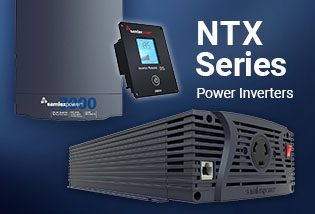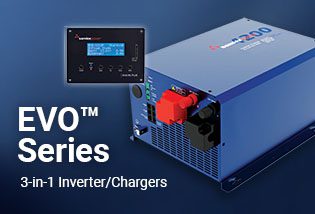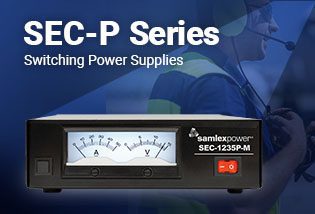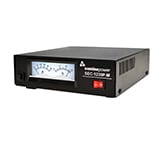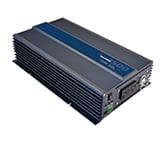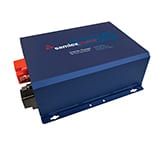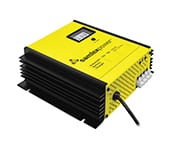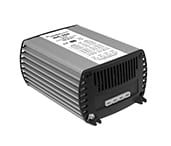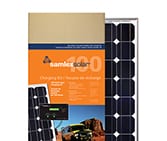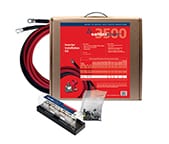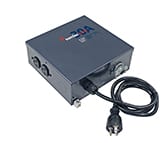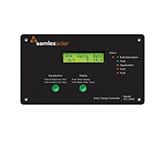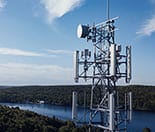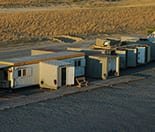Inverters - Grounding and Neutral Bonding
What is the conductor configuration for single phase AC Power transmission?
For single phase transmission of AC power or DC power, two conductors are required that will be carrying the current. These are called the “current-carrying” conductors. A third conductor is used for grounding to prevent the build up of voltages that may result in undue hazards to the connected equipment or persons. This is called the “non current-carrying” conductor (will carry current only under ground fault conditions)
What does the term "grounded" indicate?
The term “grounded” indicates that one or more parts of the electrical system are connected to earth, which is considered to have zero voltage or potential. In some areas, the term “earthing” is used instead of grounding.
What is a "grounded conductor"?
A “grounded conductor” is a “current-carrying” conductor that normally carries current and is also connected to earth. Examples are the “neutral” conductor in AC wiring and the negative conductor in many DC systems. A “grounded system” is a system in which one of the current-carrying conductors is grounded.
What is an "equipment grounding conductor"?
An “equipment grounding conductor” is a conductor that does not normally carry current (except under fault conditions) and is also connected to earth. It is used to connect the exposed metal surfaces of electrical equipment together and then to ground. Examples are the bare copper conductor in non-metallic sheathed cable (Romex ®) and the green, insulated conductor in power cords in portable equipment. These equipment-grounding conductors help to prevent electric shock and allow over-current devices to operate properly when ground faults occur. The size of this conductor should be coordinated with the size of the over-current devices involved
What is a "grounding electrode"?
A “grounding electrode” is the metallic device that is used to make actual contact with the earth. Other types of grounding electrodes include metal water pipes and metal building frames.
What is a "grounding electrode conductor"?
A “grounding electrode conductor” is the conductor between a common single grounding point in the system and the grounding electrode
What does a "Bond" refer to?
“Bond” refers to the connection between the “grounded conductor”, the “equipment grounding” conductors and the “grounding electrode” conductor. Bonding is also used to describe connecting all of the exposed metal surfaces together to complete the equipment-grounding conductors.
What does a "grounded electrical power distribution system" refer to?
The National Electrical Code (NEC) requires the use of a “grounded electrical distribution system” for a permanently connected AC power source. As per this system, one of the two current-carrying conductors is required to be grounded. This grounded conductor is called the “Neutral / Cold / Return”. As this conductor is bonded to earth ground, it will be at near zero voltage or potential. There is no risk of electrical shock if this conductor is touched. The other current carrying conductor is called the “Line / Live / Hot”. The connection between the “Neutral” and the grounding electrode conductor is made only at one point in the system. This is known as the system ground. This single point connection (bond) is usually made in the service entrance or in the load center. If this connection is inadvertently made in more than one place, then unwanted currents will flow in the equipment grounding conductors. These unwanted currents may cause inverters and charge controllers to be unreliable and may interfere with the operation of ground-fault detectors and over-current devices
NOTE: In a single phase AC power source, a current-carrying conductor that is not bonded to the earth ground cannot be called a “neutral”. This conductor will be at an elevated voltage with respect to the earth ground and may produce electrical shock when touched.
What is the polarity and color codes for power cords, plugs and receptacles used with 120 V, 60 Hz electrical systems?
Single phase 120 VAC, 60 Hz AC devices and appliances use 2 pole, 3 wire grounding configuration for making AC side connections. The plug / receptacle has three pins / slots two flat pins / slots (also called poles) that are connected to the two current-carrying conductors and a round pin / slot which is connected to a non-current carrying conductor (this will carry current only during ground fault conditions) One flat pin / slot is connected to a black current-carrying conductor which is also called “Line/Live/Hot” pole.
The other flat pin / slot is connected to the white current-carrying conductor also called the “Neutral / Return / Cold” pole. The third round pin / slot is connected to the non-current carrying green “equipment grounding conductor”. This green “equipment grounding conductor” is bonded to the metal chassis of the device or appliance. The plug (for example 15 A, NEMA5-15P) will mate with the corresponding female slots of the NEMA 5-15R receptacle.
What precaution should be taken in inverters where none of the current carrying conductors is bonded to the chassis?
In some inverters designed for portable use, the two current carrying conductors connected to the “Line/Live/Hot” slot and the “Neutral / Return / Cold” slot of the receptacle ( for example, 15 A NEMA5-15R) are isolated from the metal chassis of the inverter. In these inverters, none of the two poles can be called Neutral as both these poles are isolated from the chassis of the inverter. Both the Line and Neutral slots of the receptacle will be at an elevated voltage with respect to the chassis normally around 60 VAC (Half of the voltage between the two current carrying conductors). Hence, do not touch the neutral slot of the receptacle!
These types of inverters are designed to be connected directly to the AC loads. These are not designed to be permanently installed into household or recreational vehicle AC distribution wiring. As this type of connection / installation can not be classified as a permanent installation, the NEC requirement of grounded distribution system doesn’t strictly apply.
What are the standards pertaining to inverters where none of the current carrying conductors is bonded to the chassis?
The UL standard for this type of inverters- UL458 does not have a requirement for a bonded neutral on the output of inverters. As long as the installation requirement of grounding the chassis of the inverter has been accomplished, loads that are plugged in will have their chassis held at the same ground potential as the chassis of the inverter and the house or RV. The only difference is that the neutral slot of the receptacle has approximately 60V on it instead of the usual 0V.
The impact of this is minimal, since parts of wiring and equipment that are connected to the neutral side of the circuit are required by safety standards to be treated as if they were at 120VAC, since there are many receptacles that are wired backwards or 2-prong plugs that are not polarized.
Therefore, a voltage of approximately 60VAC of the Neutral slot is not accessible to the user, and any shock hazard presented is mitigated by lack of access. The main safety agencies, CSA, UL, and ETL, have all approved inverters with this half-voltage on the neutral scheme.


